Perform LwM2M Read and Write#
This section describes how to perform a LwM2M WRITE and READ operations in your Azure IoT Hub and Coiote IoT DM.
A WRITE operation lets you change the current value on the given data model component: object, object instance, and resource. The READ enables you to see the updated value of an object, object instance, or resource.
In this section, you learn how to:
- Perform WRITE on resources
- Check for the reported value changes in resources
- Perform READ on resources
Prerequisites#
- An active Azure IoT Hub with hub owner access permissions.
- A Coiote IoT DM user account with permissions to use the integration extension.
- A device group created in Coiote IoT DM.
- A configured extension between Coiote IoT DM and Azure Iot Hub.
- A configured integration template in Coiote IoT DM, assigned to the device group.
- A connected device.
Perform WRITE#
Let’s perform a WRITE operation on the Lifetime resource with ID 1/1/1. From the Azure IoT integration standpoint, Lifetime it is interpreted as a Property.
In Azure IoT Hub, value changes for both Telemetry and Property are stored in the Device twin. To perform a WRITE operation, do the following:
-
In your Azure IoT Hub account, go to Devices from the left pane.
-
Click on the device and then go to Device twin.
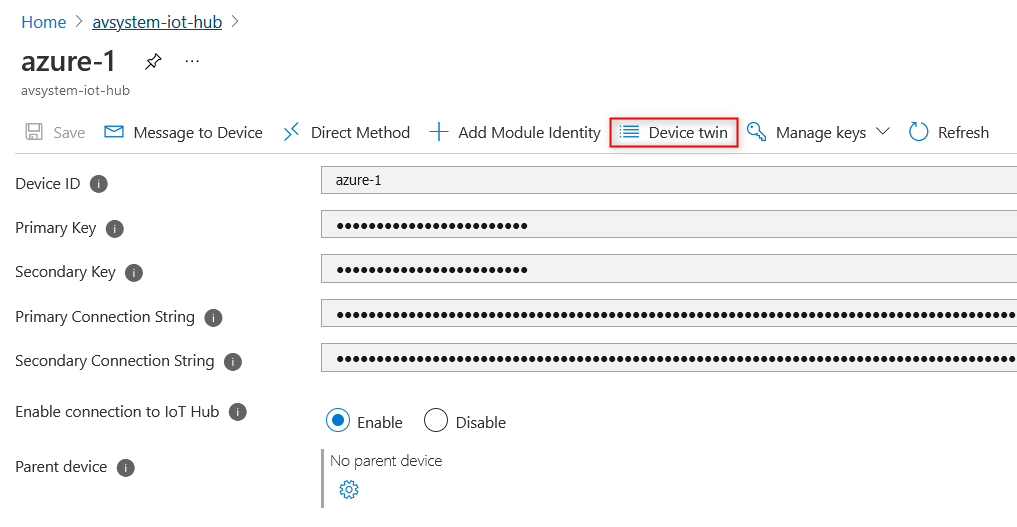
-
Find the desired property in the JSON snippet. This is where you define what needs to be observed.
-
To the 1/1/1 (Lifetime) resource, add the following snippet under the
"desired": {property and click Save:"lwm2m": { "1": { "1": { "0": {}, "1": { "value": 60 }, } }, },Note
The exact LwM2M path of the Lifetime resource depends on the LwM2M client used and may vary slightly, e.g. in the object instance number: 1/0/1. For the purpose of this tutorial, the Anjay LwM2M Client is used. If needed, modify the snippet according to your case.
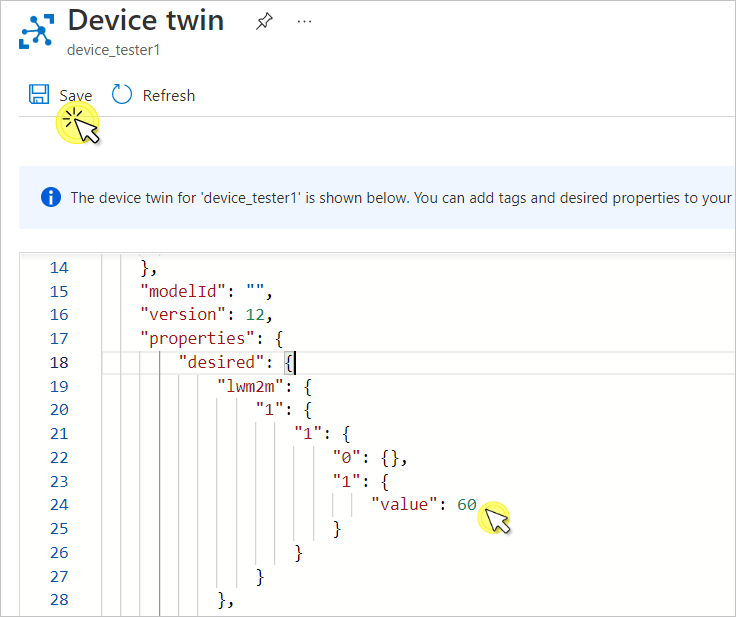
After you click Save, the line with value: 60 will trigger the WRITE operation.
See value changes#
In Azure IoT Hub#
The value change for the resource is displayed in the same Device Twin JSON snippet. Scroll down to the Reported property and find the value line for the 1/1/1 resource.
"reported": {
"lwm2m": {
"1": {
"1": {
"0": {},
"1": {
"value": 60
},
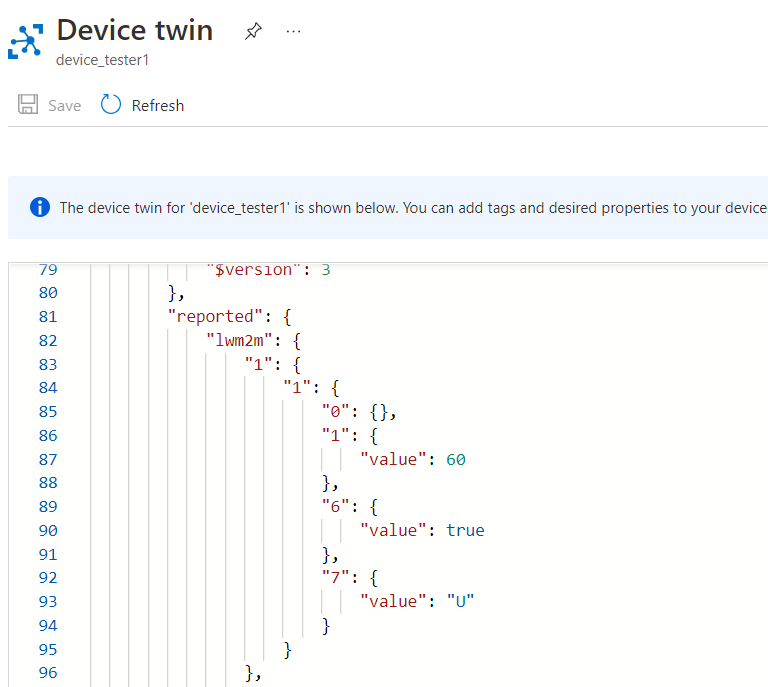
If you don’t see any changes, click Refresh. If it doesn’t help, you can check whether the WRITE operation has been performed in Coiote IoT DM as well.
In Coiote IoT DM#
This step is optional. If you want to make sure the WRITE has been correctly performed in Coiote IoT DM, do the following:
- In Coiote IoT DM, go to your device and select the Data model tab.
-
Expand the LwM2M Server object, find the Lifetime (1/1/1) resource in the list. If there is no change in data, use the Refresh icon in the top right corner of the screen.
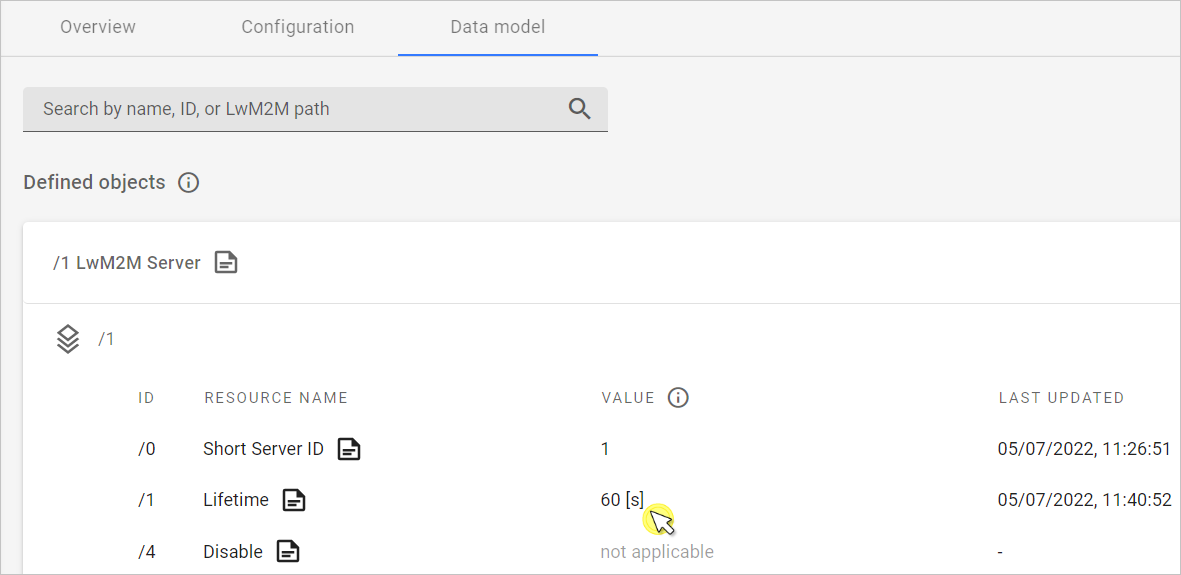
You have successfully performed a LwM2M WRITE on a resource.
Perform READ#
Let’s perform a READ operation on the Temperature object's Sensor Value resource with ID 3303/0/5700 defined as a Property in the integration template in Coiote IoT DM.
To learn more about reading value changes for both Telemetry and Property, refer to LwM2M mappings for Azure IoT Hub. To perform a READ operation, do the following:
- In Coiote IoT DM, go to your device and select the Data model tab.
- Expand the Temperature object, and find the Sensor Value (3303/0/5700) resource in the list.
- Click the Read resource icon located under the OPERATIONS column.
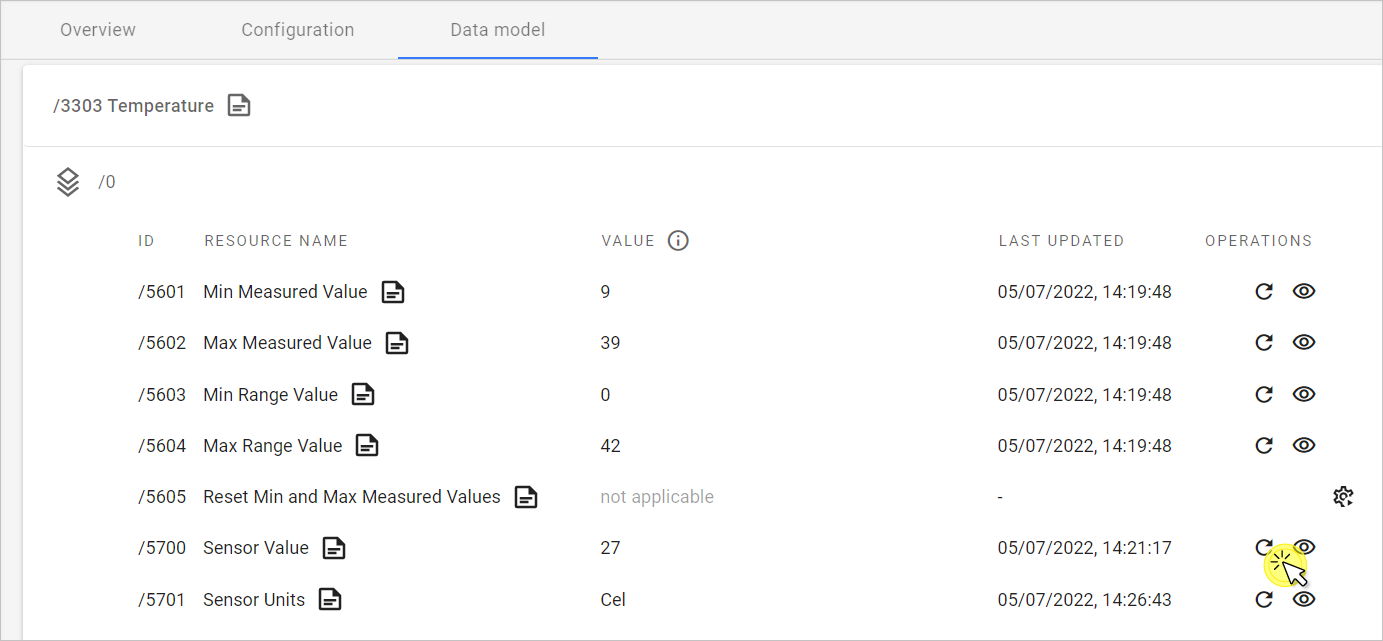
- The READ is scheduled - if there is any value change, it should be displayed in a few moments (depending on device settings, like the Lifetime resource).
See value change in Azure IoT Hub#
The value change for the resource is displayed in the Device Twin JSON snippet. Scroll down to the Reported property and find the value line for the 3303/0/5700 resource.
"reported": {
"lwm2m": {
"3303": {
"0": {
"5601": {},
"5602": {},
"5603": {},
"5604": {},
"5700": {
"value": 18
},
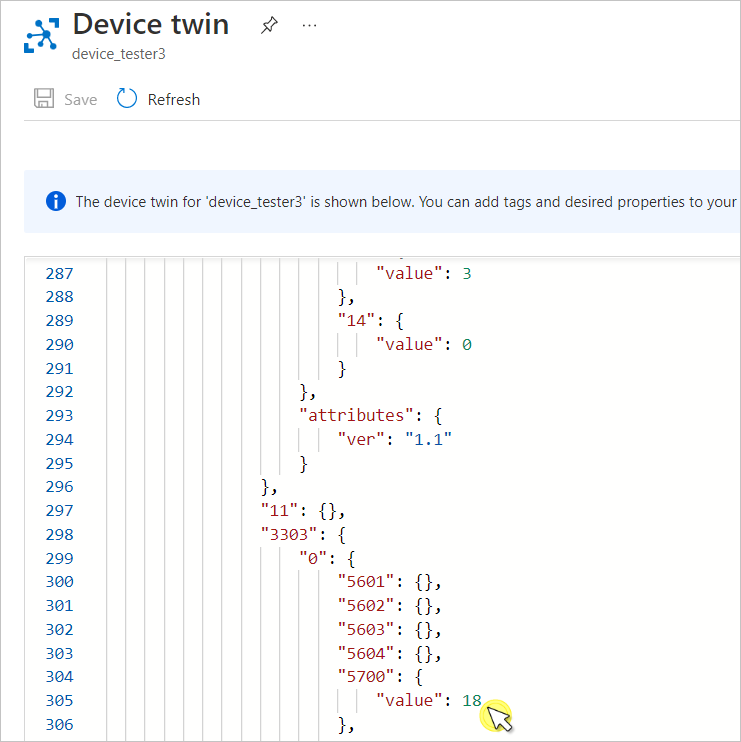
If you don’t see any changes, click Refresh. If it doesn’t help, you can check whether the READ operation has been performed in Coiote IoT DM as well.
Next steps#
Air quality monitoring - tutorial